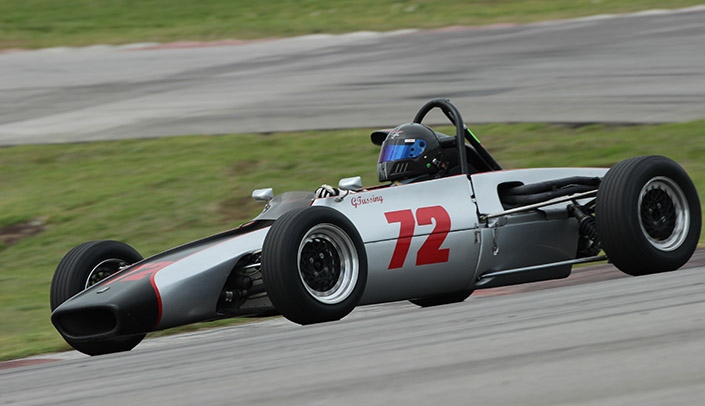Gerald Tussing, DDS, a professor in the department of surgical specialties at the UNMC College of Dentistry, found a unique way to stay physically fit. For the past 41 years, he has been racing vintage Formula One cars, which are single-seat, open-cockpit, open-wheel racing cars. He participates in up to eight races per year across the country. Racing helps Dr. Tussing, who is in his 80s, stay young.
“Formula One cars are the most dangerous, but the most elite kind. I race on closed tracks that are two to four miles long,” Dr. Tussing said. “What’s the most fun is the cornering speeds you can achieve. You’ve got to know what you’re doing as far as corners or they can come up and really bite you.”
“It takes your full concentration to go through a corner. You’ve got to determine ‘I’m going to downshift here, touch the brake here, turn in here, exit here.’ And you do that at every single corner. If you do it right, you can just fly through the corners and it’s a real thrill,” he said.
Dr. Tussing said that being physically fit is key to success in racing.
“It’s the gravitational forces when you take corners that really wear you out, so you want to be as strong as you can. Racing is the reason I stay fit. I work out five days a week doing cardio and resistance training,” he said. “It takes so much concentration. When you get tired, you lose focus, so the more fit you are, the better you can concentrate.”
Dr. Tussing got his start in racing in the 1970s when he bought a small Porsche and raced one of his College of Dentistry colleagues. Dr. Tussing couldn’t keep up with him, so he decided he needed to learn more about racing cars. He attended a racing school in Sonoma Valley, California, where he experienced how exciting it was to speed around corners.
Throughout the years, Dr. Tussing has won races, but can’t recall how many.
“This type of racing is different from what most people think of racing. It isn’t cutthroat. The racers love their cars and want to preserve them and just enjoy the thrill of going fast. We’re all very collegial and appreciate the cars and the ambiance more than who’s going to finish first,” he said.
Dr. Tussing has hundreds of racing friends across the country from all walks of life, including many dentists. His travel companion is a retired racer who serves as his mechanic. Since he has a vintage car, if it breaks, his mechanic must fabricate parts to keep Dr. Tussing on the racetrack.
“My colleagues and students think my racing is pretty neat. A few of my colleagues have come to races with me just to see what it’s like. They get a kick out of it and enjoy walking around and looking at the hundreds of different varieties of cars,” he said. “When I return from a race, my students always want to hear about how it went.”
Dr. Tussing has no plans to stop racing.
“I don’t think there’s ever been anybody in their 80s racing a Formula One car. At a race last year, we lined up by driver’s age, oldest to youngest. And guess who was first in line?”
